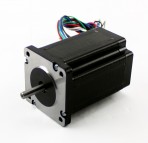Inteldevconference
Intel HPC Software WorkshopAdvantage of NEMA 17 Stepper Motors
Monday , 9, August 2021 Business and Management Comments Off on Advantage of NEMA 17 Stepper MotorsThe NEMA 17 stepper motors are unique in their features with a hybrid stepper motor consisting of the 1.7×1.7-inch faceplate. For smooth rotation, they have a 0.9/1.8 degree per step and good holding torque. This is commonly used in the deployment of robotic arms, 3D printers and many other applications.
One can pick the required supply voltage and motor based on the need of the application. They have a sleek design and are compact. They show excellent performance in terms of speed, torque, and step resolution. Further, the interference factors like the value of the current, magnitude of the voltage, temperature change, and the waveform do not affect the step value of the NEMA 17 stepper motor.
You can pop over this website if you want to buy stepper motor online.

They come with a lot of benefits compared to any other motors out in the market. They undoubtedly outperform any other type of motor due to its unique features.
Conversely, there are also a few weak points where it might not be that effective. However, the main advantage is its ability to enable outstanding position and speed control of the motors. The feature has proven fruitful results when used in different applications like dosing, production, and industrial equipment.
The positional accuracy
Generally, the common use of a stepper motor while using it in motor-controlled appliances where we require high positional accuracy. It comes into play when the conventional DC motor fails by turning constantly, where it can turn an exact number of given steps. In one revolution a it can generally turn to 25600 steps.
The number of degrees per each step in the stepper motor can enable the motor to move from a particular fixed position to another position given at any point in the circle. In standard 200 step motors, they can turn up to 1.8 degrees per step.